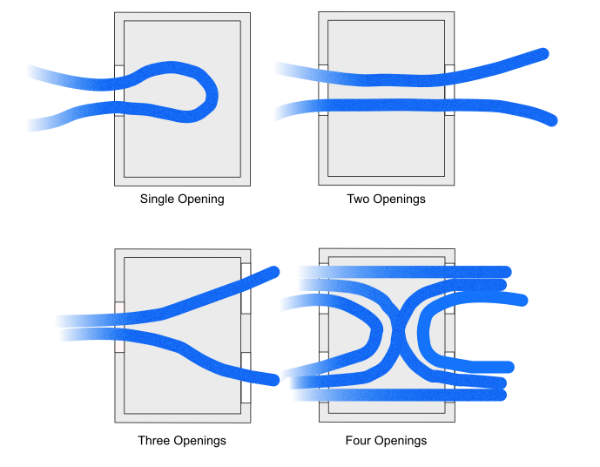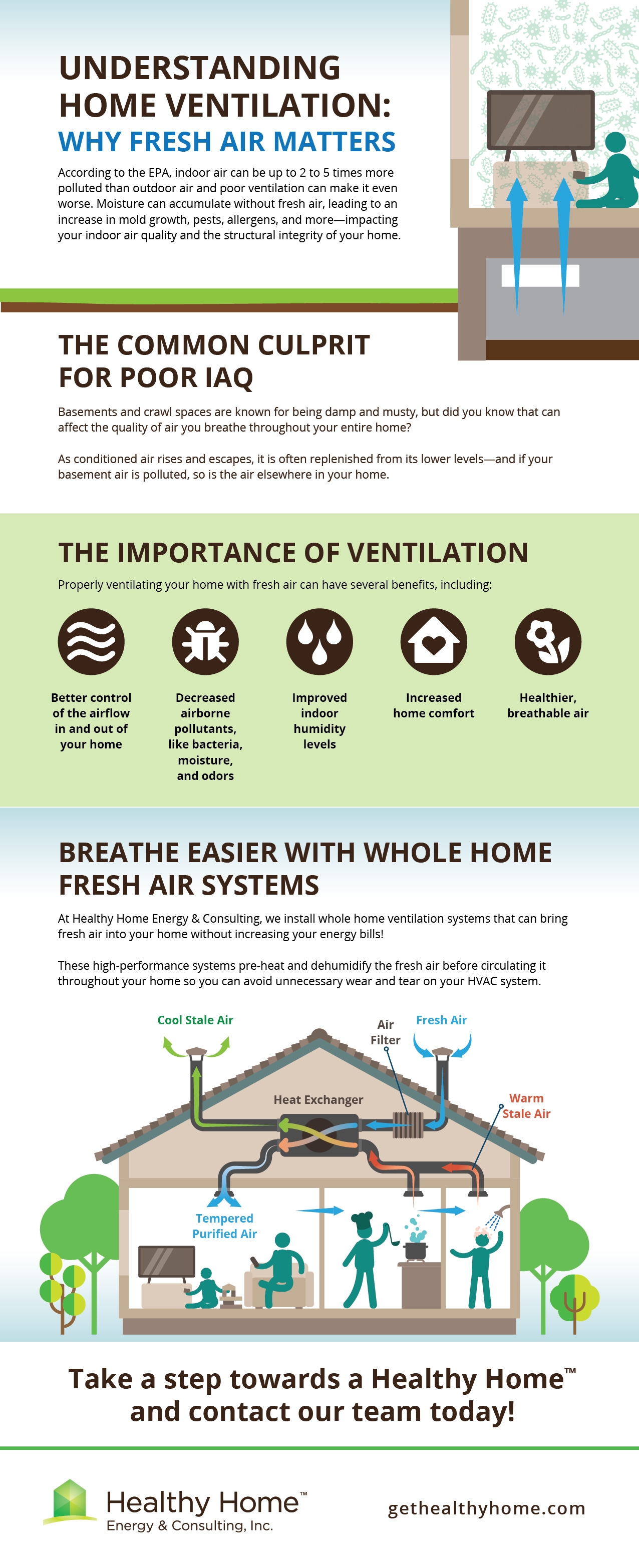The Complete Beginner’s Guide to Home Ventilation Melbourne
Wiki Article
Checking Out Cutting-edge Solutions for Optimal Home Ventilation Equipments
Home ventilation plays a crucial role in preserving wellness and convenience within living areas. With innovations in technology, ingenious remedies are emerging to optimize these systems. Smart ventilation, energy healing ventilators, and advanced filtering are improving just how air quality is managed - Home Ventilation Melbourne. Nonetheless, the combination of these technologies questions concerning their effectiveness and adaptability in different home settings. What implications do these developments hold for future living standards?The Significance of Home Ventilation for Health and Convenience
Although commonly overlooked, home air flow plays a crucial role in keeping both health and comfort within residential spaces. Appropriate ventilation is important for the blood circulation of fresh air, which aids to thin down indoor contaminants such as unstable organic substances, allergens, and smells. Without appropriate air flow, these impurities can gather, causing respiratory concerns and various other health issue. Additionally, efficient air flow adds to regulating humidity degrees, stopping mold and mildew development and structural damage. By guaranteeing a well balanced exchange of air, citizens can take pleasure in a much more positive interior atmosphere, improving general health. Ample air flow can boost power efficiency by minimizing the need for extreme heating or cooling, eventually resulting in lower utility bills and a more sustainable living space.Smart Ventilation Equipments: Harnessing Technology for Efficiency
Smart air flow systems represent a considerable advancement in home air management, leveraging IoT combination for improved control. These systems not only advertise power performance yet additionally offer remote monitoring capabilities, enabling individuals to enhance their interior settings flawlessly. By harnessing modern technology, house owners can attain enhanced air top quality while lowering power intake.IoT Assimilation Advantages
How can IoT assimilation transform typical air flow systems right into extremely effective clever options? By incorporating Internet of Things (IoT) technology, air flow systems can attain real-time surveillance and control, boosting their operational effectiveness. Sensors placed throughout a home accumulate data on air high quality, temperature, and humidity, permitting for automated modifications based upon existing problems. This immediate responsiveness results in improved interior air quality and comfort levels. In enhancement, IoT-enabled systems can interact with other clever home gadgets, creating a natural community that maximizes power usage. Customers can also access and handle their ventilation systems remotely via smart devices, supplying convenience and raised control. In general, IoT assimilation stands for a considerable advancement, bringing knowledge and adaptability to standard ventilation methods.Energy Effectiveness Includes
As energy effectiveness becomes a crucial focus in modern-day home style, progressed ventilation systems use cutting-edge features that substantially reduce energy intake. These smart ventilation systems use sensing units to monitor indoor air moisture, temperature level, and quality degrees, automatically adjusting air flow to preserve suitable conditions. By utilizing energy healing ventilators (ERVs), they reuse and capture power from outbound air, decreasing home heating and cooling demands. Variable speed fans better boost performance by adjusting their operation based on real-time needs, avoiding unnecessary energy waste - Home Ventilation Melbourne. Additionally, programmable timers and occupancy sensors guarantee that air flow runs only when essential, adding to reduced energy expenses. Jointly, these functions represent a considerable advancement in creating sustainable and energy-efficient living environmentsRemote Monitoring Capabilities
What advantages do remote tracking capacities give modern-day home air flow systems? These abilities allow homeowners to track indoor air quality and system efficiency in actual time, enhancing total performance. By supplying data on air, temperature level, and humidity pollutants, clever ventilation systems enable positive adjustments, guaranteeing perfect problems. In addition, remote monitoring helps with upkeep informs, identifying possible concerns before they rise, consequently decreasing repair expenses and downtime. Users can access system analytics via mobile applications, enabling for hassle-free control even when far from home. This technological integration not only advertises energy efficiency however likewise adds to a healthier living setting. Ultimately, remote surveillance abilities stand for a considerable development in home air flow, lining up with the expanding demand for wise home modern technologies.Energy Recuperation Ventilators: Making The Most Of Energy Financial Savings
Energy healing ventilators (ERVs) play an important duty in enhancing home power effectiveness through efficient warmth exchange. By transferring thermal power in between incoming and outbound air, these systems noticeably reduce overall energy intake. This innovative method not just keeps interior air top quality but likewise adds to lower utility expenses.Efficiency of Warm Exchange
While preserving interior air top quality is vital for wellness and convenience, the efficiency of heat exchange in energy healing ventilators (ERVs) plays an important duty in taking full advantage of energy savings. The primary feature of an ERV is to transfer heat and moisture in between incoming and outbound jet stream, which optimizes interior problems while decreasing power loss. High-efficiency warm exchangers can significantly reduce the load on heating and cooling down systems by recovering energy that would otherwise be squandered. The effectiveness of these systems is often measured by their core temperature exchange rates, which can differ based upon style and materials used. By focusing on innovative warmth exchange modern technologies, homeowners can boost their air flow systems, causing improved energy performance and expense reductions over time.Decreased Energy Usage
Minimizing energy intake is a key benefit of energy recovery ventilators (ERVs), as they successfully recycle thermal power from tired air. By transferring heat in between incoming and outgoing air streams, ERVs decrease the requirement for additional heating or cooling, leading to substantial power savings. This procedure not only lowers energy expenses but likewise lessens the ecological impact related to higher power use. Furthermore, ERVs preserve consistent indoor air quality without endangering thermal comfort, developing a balanced living setting. By integrating ERVs into home air flow systems, home owners can accomplish better energy efficiency, allowing a lasting approach to indoor air monitoring while taking advantage of reduced power bills. Eventually, ERVs stand for an engaging remedy for energy-conscious customers.Advanced Filtration Technologies for Cleaner Indoor Air
As indoor air top quality becomes significantly recognized as a critical element of wellness and well-being, advanced purification technologies are emerging as crucial tools for making sure cleaner settings. These modern technologies include high-efficiency particulate air (HEPA) filters, turned on carbon filters, and electrostatic precipitators, each designed to successfully catch air-borne contaminants, irritants, and unpredictable natural substances (VOCs) HEPA filters can catch fragments as tiny as 0.3 microns, significantly minimizing irritants like allergen and family pet dander. Turned on carbon filters excel in adsorbing odors and chemical vapors, adding to a fresher indoor atmosphere. Furthermore, electrostatic precipitators utilize electric fees to get rid of fragments, providing an energy-efficient option. By integrating these sophisticated filtering systems, house owners can improve interior air top quality and advertise much healthier living rooms.The Duty of Sensing Units in Enhancing Air Flow and High Quality
How can sensors change the monitoring of interior air high quality? Sensors play a crucial duty in boosting air flow and improving interior environments. By continuously keeping track of elements such as humidity, temperature level, and degrees of contaminants, they supply real-time data that educates ventilation systems. This information enables computerized modifications to airflow, guaranteeing adequate blood circulation and lessening the build-up of impurities. Furthermore, progressed sensing units can discover specific air top quality concerns, prompting prompt responses to boost comfort and wellness. The combination of these tools into air flow systems permits a more responsive and reliable management strategy, decreasing power usage while maintaining perfect air top quality. Inevitably, sensing units act as an essential element in creating much healthier indoor areas via accurate air movement policy.Incorporating Air Flow With Smart Home Systems
While lots of property owners look for convenience and performance, incorporating ventilation systems with wise home modern technology provides an ingenious service to taking care of indoor air high quality. By linking air flow units to smart home why not try here centers, residents can automate air high quality monitoring and control air flow based upon real-time information. These systems can react to changes in pollutant, moisture, and temperature levels, making sure perfect indoor conditions. Smart thermostats can operate in tandem with ventilation systems to improve energy effectiveness, minimizing prices while preserving convenience. Homeowners can likewise from another location regulate their air flow settings through mobile apps, providing flexibility and assurance. Inevitably, this integration not only streamlines management yet significantly improves the general living setting, making it a useful addition to contemporary homes.Future Fads in Home Air Flow Solutions
Arising modern technologies and enhanced understanding of interior air quality are shaping the future of home air flow solutions. One significant trend is the combination of fabricated intelligence, enabling systems to change airflow based on real-time information and tenancy patterns. On top of that, power healing ventilators are gaining traction, offering reliable air exchange while minimizing energy loss. The use of green materials and styles is additionally increasing, aligning with sustainability objectives. Smart sensing units that keep an eye on contaminants and moisture degrees are coming to be requirement, permitting useful link property owners to keep ideal indoor atmospheres. Modular and scalable systems are arising, providing personalized alternatives for different home dimensions and setups. Together, these developments assure to boost comfort, performance, and health in domestic roomsRegularly Asked Concerns
Exactly how Usually Should I Clean My Home Air Flow System?

The frequency of cleaning a home ventilation system varies based upon usage and atmosphere. Typically, it is recommended to clean up the system every three to six months to maintain ideal air quality and system performance.
Can Poor Air Flow Reason Mold Development Indoors?

What Are the Signs of Inadequate Home Air Flow?
Signs of inadequate home ventilation consist of relentless odors, boosted moisture degrees, condensation on home windows, noticeable mold and mildew development, and a general feeling of stodginess. These signs often suggest that air flow wants for preserving a healthy and balanced interior environment.Just How Can I Enhance Ventilation in Older Homes?
To enhance ventilation in older homes, one could consider setting up exhaust fans, making use of natural airflow with home windows, securing spaces for much better air control, and including air purifiers to improve indoor air high quality efficiently.Are DIY Ventilation Solutions Effective and Safe?

Smart air flow, energy recuperation ventilators, and progressed filtering are reshaping how air top quality is taken care of. As energy efficiency becomes an essential focus in contemporary home style, advanced ventilation systems provide ingenious attributes that considerably reduce energy usage. By incorporating ERVs right into home ventilation systems, homeowners can accomplish higher energy efficiency, allowing a lasting strategy to indoor air management while profiting from reduced energy costs. The assimilation of these tools right into air flow systems permits for an extra responsive and effective administration approach, minimizing energy usage while maintaining optimal air top quality. While lots of homeowners look for comfort and performance, integrating air flow systems with wise home modern technology supplies a cutting-edge remedy to managing indoor air high quality.
Report this wiki page